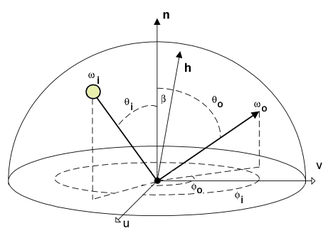Five Levels of Technique Understanding.
Too often students are satisfied with learning the basic sequence of martial art movement. Rehearsing the sequence is a starting point and not a final destination. As a teaching resource we utilize a model termed, "The five levels of technique understanding." Most commonly, this model applies to our self-defense technique training, but it can also be used in other areas including kata and sparring techniques.
The first level of technique understanding is to confidently know the correct sequence of movements associated with a particular technique. Obviously, you can not further study a series of movements if you do not know them. Knowing correct sequence allows all practitioners to share a common thread of movement that serves as a starting point of discussion and learning.
The second level of technique understanding is to study the relationship of our weaponry to our attacker's targets. This includes knowing how to correctly form the natural weapon, which aspect of the weapon makes contact with the target, and why this weapon was selected. Study of targeting requires some basic knowledge of human anatomy. Of particular interest are sensitive targets which can be damaged. Generally, the weapon we choose is selected in consideration to the target we intend to strike. Thus our target dictates our weapon, just as function ultimately defines form.
The third level of technique understanding is to comprehend the geometry of combat. What angle does our strike travel? From what direction is the attack coming? In what plane is the target situated? Have we controlled the height, width, and depth of our opponent? Often, we attack a target not merely to cause pain to a certain region of our attacker's body, but to control the geometry of our opponent.
The fourth level of technique understanding is to study the source and vectors of energy. Two basic questions must be answered in all techniques: Where does the power come from? Where is the power going? If we understand energy we can control the magnitude and direction of energy in a very precise manner. In our technique, we want to generate our power efficiency and use our opponent's power to our own favor.
The fifth level of technique understanding is to enter into the psychology of self-defense. What are you feeling? What is your opponent feeling? How can you control psychology through the physical actions of your technique? There is no fighting technique in kenpo that will work if applied devoid of an emotional commitment to defending yourself. However, even the must mundane retaliation can be effective when done with intense emotional conviction and determination. The most encompassing advice ever given on the subject of fighting psychology was summarized by the famous swordsman Miyamoto Musashi, "The way of the warrior is the resolute acceptance of death." To come to terms with death allows the mind to free itself to fully protect life.
Do not be satisfied with being a regurgitater of sequence. To know only the sequence of a technique without diving deeper is to miss most of the benefit technique training offers. The goal is to become spontaneously reactive with skilled movement that can effectively neutralize the attacking threat. Understanding why a technique is constructed allows you to internalize the principles of combat which will impact your actual ability. Knowing only the sequence will leave you with a limited number of canned tricks that offer little diversity of application.
Five Levels of Technique Understanding (c) Trevor Haines, 1999.
The first level of technique understanding is to confidently know the correct sequence of movements associated with a particular technique. Obviously, you can not further study a series of movements if you do not know them. Knowing correct sequence allows all practitioners to share a common thread of movement that serves as a starting point of discussion and learning.
The second level of technique understanding is to study the relationship of our weaponry to our attacker's targets. This includes knowing how to correctly form the natural weapon, which aspect of the weapon makes contact with the target, and why this weapon was selected. Study of targeting requires some basic knowledge of human anatomy. Of particular interest are sensitive targets which can be damaged. Generally, the weapon we choose is selected in consideration to the target we intend to strike. Thus our target dictates our weapon, just as function ultimately defines form.
The third level of technique understanding is to comprehend the geometry of combat. What angle does our strike travel? From what direction is the attack coming? In what plane is the target situated? Have we controlled the height, width, and depth of our opponent? Often, we attack a target not merely to cause pain to a certain region of our attacker's body, but to control the geometry of our opponent.
The fourth level of technique understanding is to study the source and vectors of energy. Two basic questions must be answered in all techniques: Where does the power come from? Where is the power going? If we understand energy we can control the magnitude and direction of energy in a very precise manner. In our technique, we want to generate our power efficiency and use our opponent's power to our own favor.
The fifth level of technique understanding is to enter into the psychology of self-defense. What are you feeling? What is your opponent feeling? How can you control psychology through the physical actions of your technique? There is no fighting technique in kenpo that will work if applied devoid of an emotional commitment to defending yourself. However, even the must mundane retaliation can be effective when done with intense emotional conviction and determination. The most encompassing advice ever given on the subject of fighting psychology was summarized by the famous swordsman Miyamoto Musashi, "The way of the warrior is the resolute acceptance of death." To come to terms with death allows the mind to free itself to fully protect life.
Do not be satisfied with being a regurgitater of sequence. To know only the sequence of a technique without diving deeper is to miss most of the benefit technique training offers. The goal is to become spontaneously reactive with skilled movement that can effectively neutralize the attacking threat. Understanding why a technique is constructed allows you to internalize the principles of combat which will impact your actual ability. Knowing only the sequence will leave you with a limited number of canned tricks that offer little diversity of application.
Five Levels of Technique Understanding (c) Trevor Haines, 1999.




